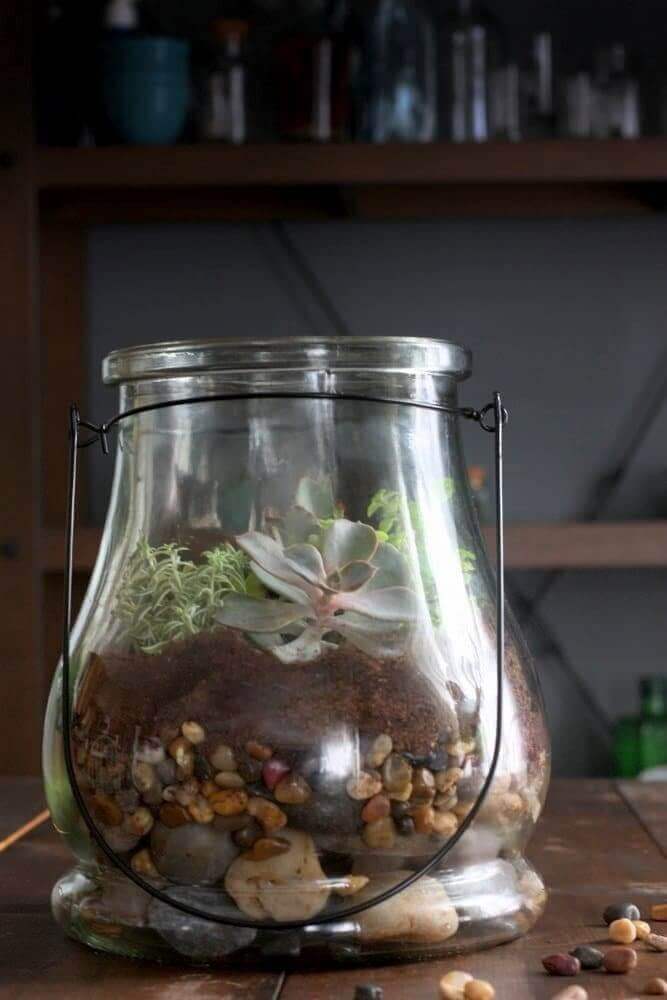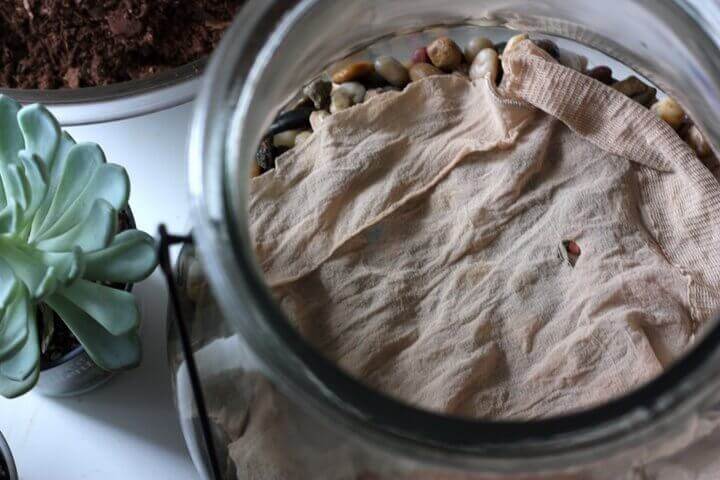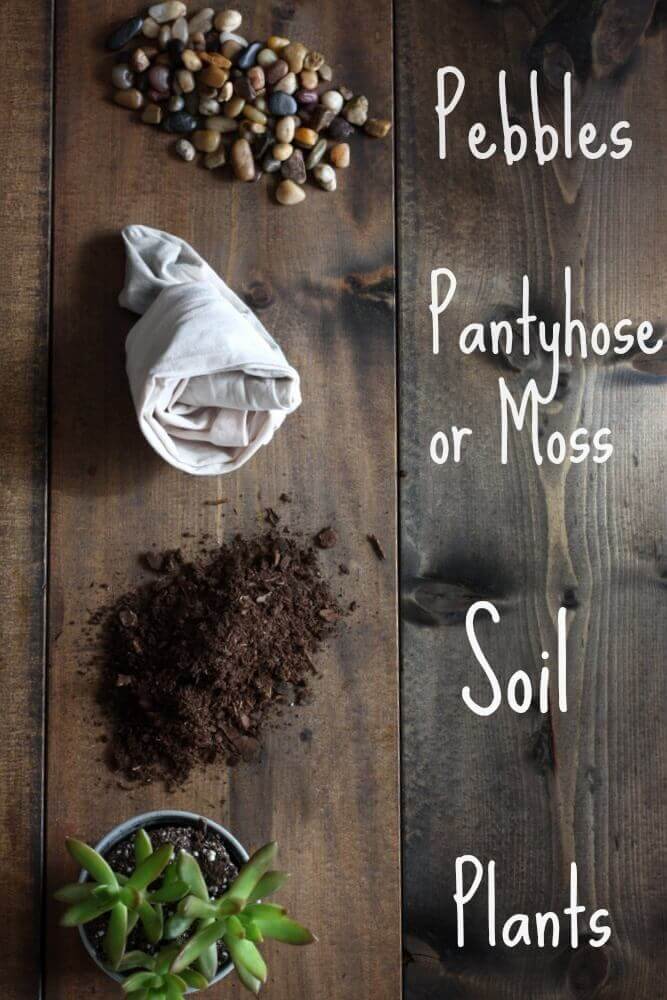How to Make a Terrarium

AH, HOMESCHOOLING . . .
The only job where you can sit at the kitchen table, nurse the baby, and supervise breakfast while getting credit for teaching home economics. Sure, there are downsides, like when your four year-old corrects your latin and the baby tries to eat the lesson plan, but you’ve got a good thing going and you know it.
For example, how else can you justify a creative whim as a class project? You get a beautiful, fresh arrangement to inspire you as the fall/winter landscape fades to brown, and the kids learn about botany, geology, and ecology.
Spoiler alert: If you homeschool and want to give this a try, I’ve included seven ways you can make this project educational for your little ones. You’re welcome 


5 THINGS CHILDREN CAN LEARN FROM BUILDING A TERRARIUM
- The life cycle of plants – More on that here.
- Geology– Discuss desert landscapes and the different layers of the earth. (You can find some lesson plan ideas that might tie in here. Also, although this discussion on soil layers is not specifically geared toward deserts, it’s a good place to start.
- Botany – Identify one of your succulent plants: where it grows, how it’s adapted to low-water environments, whether or not it has any medicinal or culinary properties, etc.
- Interaction systems – “In the real world eco-systems can grow to become tremendously complex systems of interactions where many types of plants, animals and insects contribute in their own ways. While you probably can’t build a complex eco-system in a small terrarium you can display and discuss the importance of how your plants interact together to create a whole unit.The best example of this is the sharing of, and competing for the resources of water, sunlight, and nutrients. This is particularly noticeable if you use different types of plants. Some plants will send out extensive root systems in an attempt to monopolize nutrients in the soil while other plants will shoot tall and have large leaf systems that can potentially block sunlight from reaching lower plants. Some plants will grow extremely fast in a race to get all the resources before other plants have a chance to take root. These factors are only a small part of the interaction that happens in even the smallest of eco-systems but they are a good way to begin the thought process for how plant and animal systems interact in complex ways,” writes Will, aka The Terrarium Man.
- Environmental Responsibility – “Your children will also learn about caring for the earth and for living things. Stress to them that the terrarium is like the earth in miniature and that if they care for it properly, it will thrive. If they ignore it, pollute it, or introduce harmful substances, the terrarium will no longer be healthy. The plants will die and any animals they have placed in it will die as well. They will learn valuable lessons about responsibility in general, and about responsibility for the only earth we have.” (source)
- Ecology – Ask what your kids think would happen if you poured toxic chemicals into the bowl. Talk about how our environment is being polluted, then discuss mycoremediation, which uses mushrooms to heal toxic environments. Yes, I really said that. Mushrooms have the ability to clean soil affected by oil spills, industrial waste and pesticides at the molecular level. (source)

WHAT KIND OF TERRARIUM IS BEST?
There are two basic types of terrarium containers: open and closed. Open terrariums are best for succulents, cacti and many houseplants. Closed terrariums are better for moss, ferns, and other plants that love humidity.
Though closed terrariums are amazing for a class on ecosystems – you can discuss photosynthesis, respiration, and the water cycle, oh my! – they’re also exceptionally vulnerable to mold/rot problems. We decided to go with the easy, open terrarium. Plus, moss can sometimes be difficult to come by, while just about any hardware store with a nursery will have succulents in stock.
When choosing your container, keep in mind that succulents do best in dry conditions with good air flow. Wide, open containers are ideal. Small openings trap more heat and moisture, so terrariums made with those types of containers should be kept further away from windows that receive intense afternoon heat.
Unfortunately I didn’t come across that info until Katie and I had already fallen in love with the balloon lanterns you see in the photos. So yeah, maybe make a more strategic choice than we did, even though I have seen at least one company that sells a succulent terrarium similar to ours. I’ll let you know how ours are doing in a few months.
HOW TO MAKE A TERRARIUM
Equipment Needed
- Glass container with an opening
- Pebbles
- Pantyhose or sphagnum moss (optional)
- Succulent-friendly potting soil (details in step 4)
- Succulent plants
Step 1: Wash And Dry Your Container
This helps good bacteria present in the soil get well established.
Step 2: Add A Layer Of Pebbles
About one inch is good, but if you want to layer for added effect go for it. The potami and I added a layer of small stones with pebbles on top.



Step 3: Add Pantyhose or Sphagnum Moss
Though this step is not absolutely necessary, we chose to lay a few swaths of pantyhose on top of the pebbles. The pantyhose will prevent our potting soil from settling into the rock layer over time. Sphagnum moss will also work, but we didn’t have any on hand.
(P.S. I don’t wear pantyhose. I keep it on hand for making wool dryer balls, pinky swear.)

Step 4: Add Soil
Succulents don’t do well in overly-moist soil, so look for a non-compact potting mix that drains quickly. You can buy organic cactus and succulent-friendly potting mix here, or you can mix up your own with these instructions.
Add a minimum of two inches of soil to your terrarium, or more as needed. For example, if your succulents have 4 inch roots, add 4-5 inches.

Step 5: Add Your Succulents
The plants should not be touching each other or the glass. My helpers probably added a few more than we needed, but that means I get to teach them about pruning now so it works out.

HOW TO CARE FOR YOUR SUCCULENT TERRARIUM
Make sure it gets 4-5 hours of bright, indirect sunlight each day.
Water every 2-3 weeks. Each plant should get about 1-2 teaspoons of water, delivered with a medicine dropper or this technique. I know, you want to do more because you are nurturing like that. Unless they begin to look withered, it’s probably best not to.

Aucun commentaire